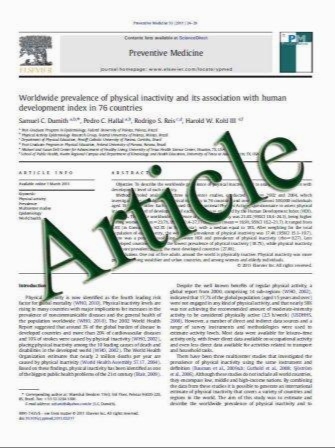Nicotine-induced human breast cancer cell proliferation attenuated by garcinol through down-regulation of the nicotinic receptor and cyclin D3 proteins
- نوع فایل : کتاب
- زبان : انگلیسی
- مؤلف : Ching-Shyang Chen Chia-Hwa Lee Chang-Da Hsieh Chi-Tang Ho Min-Hsiung Pan Ching-Shui Huang Shih-Hsin Tu Ying-Jan Wang Li-Ching Chen Y
- چاپ و سال / کشور: 2010
Description
Previous studies have demonstrated that the persistent exposure of human bronchial epithelial cells to nicotine (Nic) through nicotinic acetylcholine receptors increases cyclin D1 promoter activity and protein expression. The main purpose of this study is to elucidate the carcinogenic role of cyclin D3, which is involved in breast tumorigenesis when induced by Nic. Real-time PCR analysis revealed that cyclin D3 is highly expressed at the mRNA level in surgically dissected breast tumor tissue, compared to the surrounding normal tissue (tumor/normal fold ratio = 17.93, n = 74). To test whether Nic/nicotinic acetylcholine receptor (nAChR) binding could affect cyclin D3 expression in human breast cancer cells, the transformed cell line MCF-10A-Nic (DOX) was generated from normal breast epithelial cells (MCF-10A) with inducible a9-nAChR gene expression, using the adenovirus tetracycline- regulated Tet-off system. Tet-regulated overexpression of a9-nAChR in MCF-10A-Nic (DOX) xenografted BALB/c-nu/nu mice resulted in a significant induction of cyclin D3. In contrast, cyclin D3 expression was down-regulated in a9-nAChR knock-down (siRNA) MDAMB- 231-xenografted tumors in NOD.CB17-PRKDC (SCID)/J(NOD-SCID) mice. Furthermore, we found that Nic-induced human breast cancer (MDA-MB-231) cell proliferation was inhibited by 1 lM of garcinol (Gar), isolated from the edible fruit Garcinia indica, through downregulation of a9-nAChR and cyclin D3 expression. These results suggest that a9-nAChR-mediated cyclin D3 overexpression is important for nicotine-induced transformation of normal human breast epithelial cells. The homeostatic regulation of cyclin D3 has the potential to be a molecular target for antitumor chemotherapeutic or chemopreventive purposes in clinical breast cancer patients.
Breast Cancer Res Treat (2011) 125:73–87 Received: 8 January 2010 / Accepted: 24 February 2010 / Published online: 13 March 2010 Springer Science+Business Media, LLC. 2010


